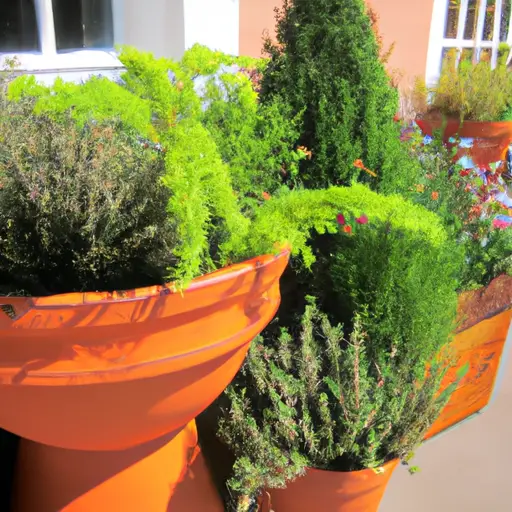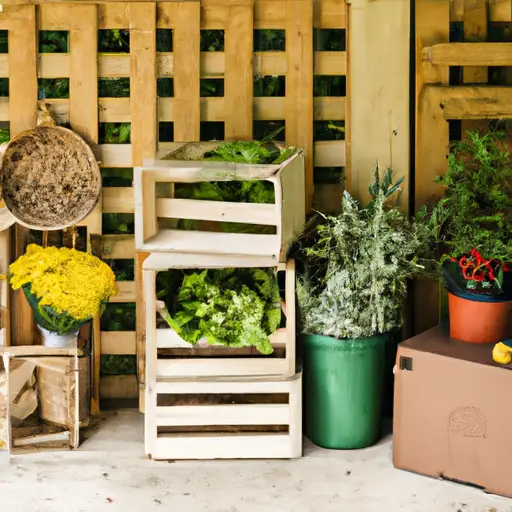Tricks and Tips for Successful Container Gardening
Container gardening is becoming increasingly popular as people with limited space or mobility are discovering the joys of growing their own plants. Whether you have a small balcony, a tiny patio, or even just a windowsill, container gardening allows you to create a beautiful and productive garden in any space. However, to be successful at container gardening, there are some tricks and tips that can help you get the most out of your plants. In this article, we will explore some of these strategies to ensure successful container gardening.
1. Choose the right containers: The first step in successful container gardening is selecting the appropriate containers for your plants. Ensure that your pots have drainage holes at the bottom to prevent water from pooling and causing root rot. Additionally, choose containers that are large enough to accommodate the plant’s root system as it grows.
2. Select the right soil: Choosing the right soil mixture is crucial for container gardening. Opt for a well-draining potting mix that retains moisture while allowing excess water to flow freely. Avoid using garden soil alone as it may not provide adequate drainage and nutrients for potted plants.
3. Placement matters: Place your containers strategically based on sunlight requirements of the plants you intend to grow. Most vegetables and herbs require at least six hours of direct sunlight daily, so choose a location that provides ample light. If you have limited access to sunlight, consider using artificial lighting like grow lights. 4. Watering techniques: Proper watering is essential for the health of your container garden. Unlike traditional gardens, potted plants may dry out faster due to increased exposure to air circulation. Water your containers thoroughly until water drains out from the bottom but avoid overwatering as it can lead to root rot.
4. Watering techniques: Proper watering is essential for the health of your container garden. Unlike traditional gardens, potted plants may dry out faster due to increased exposure to air circulation. Water your containers thoroughly until water drains out from the bottom but avoid overwatering as it can lead to root rot.
5. Fertilize regularly: Container-grown plants require regular fertilization since nutrients in potting mix deplete faster than in garden soil. Use organic or slow-release fertilizer to provide a steady supply of nutrients to your plants. Follow the instructions on the label and avoid over-fertilizing, as it can harm the plants.
6. Pruning and deadheading: Regular pruning helps maintain the shape and size of your container plants, encourages bushier growth, and prevents overcrowding. Deadheading, which involves removing spent flowers, promotes continuous blooming in flowering plants. Both practices contribute to healthier and more aesthetically pleasing containers.
7. Companion planting: Consider companion planting in your containers to maximize productivity and enhance plant health. Some plant combinations naturally repel pests or attract beneficial insects, leading to fewer pest problems overall. For instance, planting marigolds alongside tomatoes can deter aphids.
8. Mulching: Apply a layer of organic mulch on top of the potting mix to help retain moisture, suppress weed growth, and regulate soil temperature in your containers. Mulch also adds an attractive finish to your garden while providing insulation for roots during extreme temperatures. 9. Protect from extreme weather conditions: Containers are more susceptible to temperature fluctuations compared to plants growing in the ground. During scorching summers or freezing winters, move your containers indoors or provide appropriate protection such as shade cloth or insulated covers.
9. Protect from extreme weather conditions: Containers are more susceptible to temperature fluctuations compared to plants growing in the ground. During scorching summers or freezing winters, move your containers indoors or provide appropriate protection such as shade cloth or insulated covers.
10. Regular monitoring: Keep a close eye on your container garden for early signs of diseases, pests, or nutrient deficiencies. Detecting problems early allows for quick intervention and prevents further damage to your plants.
11. Rotate crops: Avoid planting the same type of plant in the same container year after year as it can deplete specific nutrients from the soil over time. Rotate crops by changing locations or replanting with different species annually to maintain soil health and prevent disease buildup.
Container gardening offers numerous advantages such as easy accessibility, flexibility in plant selection, and reduced risk of weeds or pests associated with traditional gardening methods. By implementing these tricks and tips for successful container gardening, you can create a thriving and beautiful garden in even the smallest of spaces. Happy gardening!














